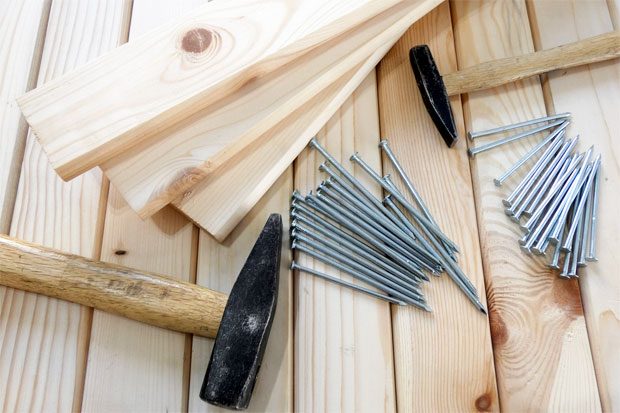Teaching Your Kids To Use Tools Safely
Teaching Your Kids To Use Tools Safely
Parents have so many items that they have to keep their kids away from for safety reasons. As time goes on and the children age, they are carefully taught the safe way of handling these items.
From using the kitchen paring knife and baking with the oven, to (eventually) learning how to drive the family car, parenting is a series of progressively teaching your children how to handle more responsibility.
Tools are one of those areas where it is easy to say, “Let Mommy do it.” For a good portion of the kiddos life, that is the safest and best answer. However, as they get older, you might consider teaching your children safe techniques for using tools.
You would be amazed at how many children make it to college without ever having touched a socket set or multi-meter.
Here are some important safety considerations to enforce in your house, as well as some ideas on how to begin teaching children how to use tools safely. If there are any tools that you are unsure of how to use properly, reach out to a friend or family member and learn how, before trying to use them around your kids.
- Keep Tools Unplugged
This is one of those things that most of us wouldn’t think of. It is imperative to make sure tools are unplugged, and battery packs are removed between uses.
It is not only important to do this when the tools are put away, but also between sections of your task. Kids are extremely intrigued and want to see what you are doing. Keeping the tools unplugged during every moment of the task except for the time that you are using the tool, helps create the safest scenario possible.
- Each Tool Has a Special Spot
As you begin to introduce children to tools, it can help to have a dedicated spot for each tool. This will help create healthy habits where your child puts the tool back each time after they use it.
As the years roll by and your children become teenagers, having the habit of putting tools back, will make the garage much more organized and easy to use for the entire family.
- Protective Gear Is Worn
One of the areas that is hard for parents to enforce is the use of personal protective gear. After all, we’ve been using saws for a couple of decades without protective glasses. Why would we start wearing them now?
Children are more likely to make mistakes and injure themselves. By making sure that the children always wear the proper protective equipment, you help them create safety habits that will protect them for years to come.
Create a culture of safety.
- Boundaries Are To Be Respected
Tools must be respected. They are dangerous.
One of the best foundations to make sure your children have before you begin introducing them to tools is to make sure that they identify and respect boundaries in their everyday life.
Whether it is not going past a certain spot in the driveway, or making their bed every morning, these conscientious acts of responsibility are a requirement before children are taught the ways of the screwdriver and multi-meter.
The last thing you need is a kid who can’t wait to get the tools out without proper supervision. A little knowledge with no respect for boundaries is one of the most dangerous situations a child can be in.
- Hammer and Nails
Zachary Drumm, who runs Tool Tally, talks about how his grandparents taught him how to use tools.
“One of the first things they did was to hand us scrap pieces of wood and some nails and let us hammer them together.”
“They still had to run the saws and power tools, but they were more than happy to let us come up with simple construction ideas and to let us use the hammer and some nails to try to build them. ”
“When they had more time, they’d take the weekend to help us build simple birdhouses and feeders. It helped all of us children to be more confident with tools from an early age.”
- Fixing Old Lawn Mowers And Computers
Most teenagers figure this out eventually. They love collecting old electronics and computers, taking them apart and building new items out of them (or repairing those items.)
This curiosity is an excellent thing to harness.
Before throwing something away like an old appliance or a broken lawnmower, take a few hours to disassemble it with your kids.
You can get in some excellent quality time while also teaching your children how to use tools.
It is surprising how much this practice will teach your children.
- Electrical Kits
This costs a little more, but there are a lot of great electrical kits to help children become comfortable with the basics of electricity.
These kits often come with small screwdrivers and meters that children can safely use with minimal supervision, making it easier to teach your children some basic techniques.
- Buy Children Their Own Tools
As your kids get older, you can begin getting them their own tools. Screwdrivers, a tape measure, safety glasses, and a hammer are great places to start.
As their skill set develops, you may add in a hand saw, socket set and flashlight.
Teaching your children to use tools can pay off immensely. Whether you need them to help you swap the alternator on your car, or want them to run the miter saw while you are laying flooring, starting your children with an awareness of how to use tools safely can empower them to be confident, well-rounded pre-teens.
Guest Article.








